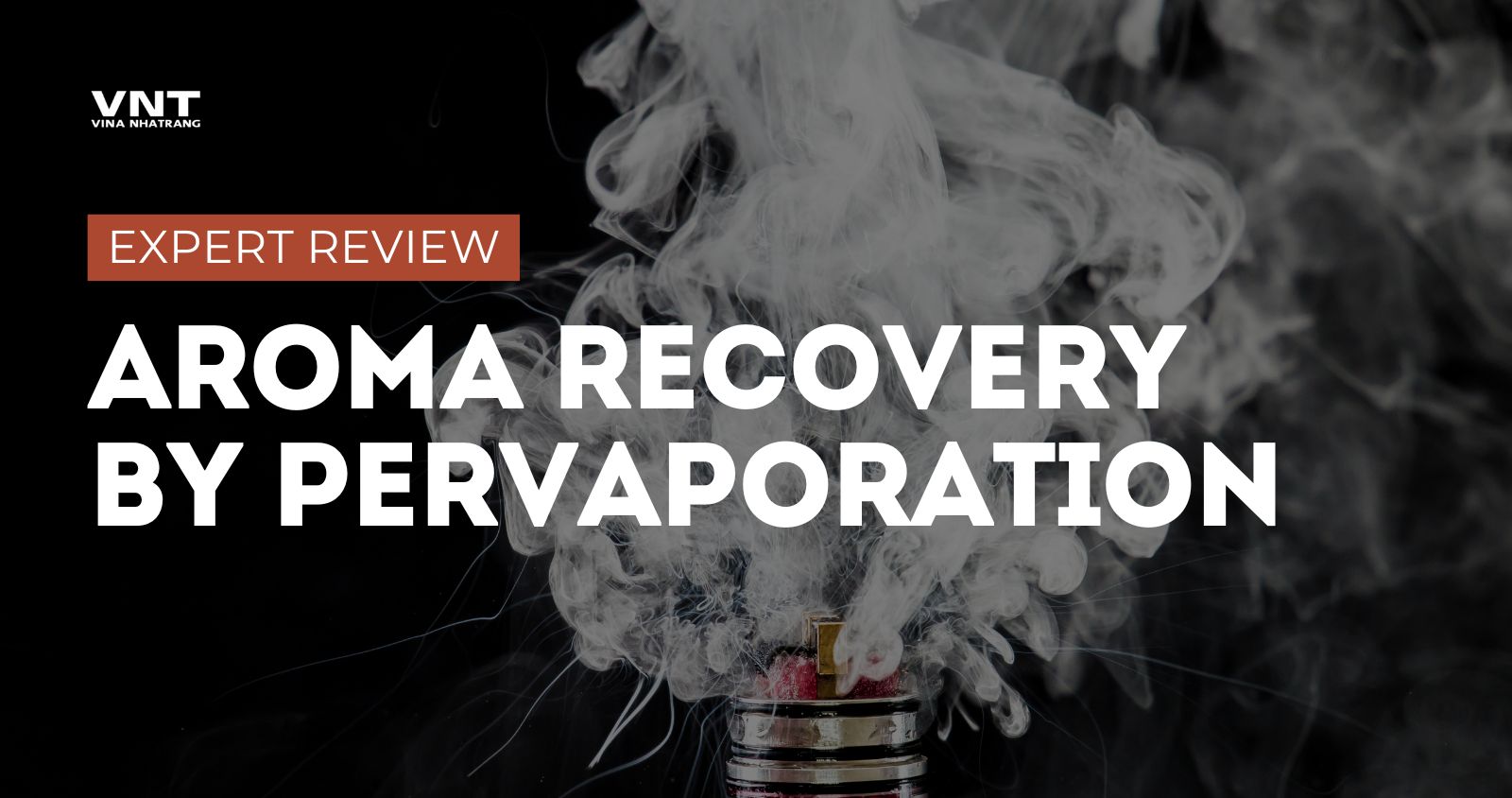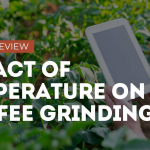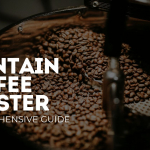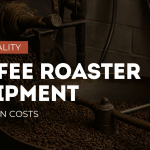One of the most advanced and promising methods for aroma recovery is pervaporation – a membrane-based separation technique that selectively extracts volatile aroma compounds from liquids without excessive heat exposure. Unlike traditional evaporation or distillation, pervaporation operates at low temperatures, making it ideal for preserving delicate and heat-sensitive aromas in beverages, dairy products, and essential oils.
This article explores the science of pervaporation, key industrial applications, and leading technologies using this innovative method.
Understanding Aroma Recovery by Pervaporation
What is Pervaporation?
Pervaporation is a membrane-based separation process that uses a selective, non-porous membrane to separate volatile aroma compounds from liquids. The process operates under a partial vacuum, allowing volatile compounds to pass through the membrane and evaporate on the permeate side, where they are condensed and collected for reintegration into the product.
How Pervaporation Works
- Aroma-rich liquid (e.g., fruit juice, wine, or dairy) is passed over a specialized membrane.
- Selective diffusion occurs—volatile aroma compounds pass through the membrane while non-volatile components remain in the liquid phase.
- The extracted aroma vapors are collected under vacuum, where they are condensed and stored.
- The recovered aroma can then be reintegrated into the final product, restoring its original sensory profile.
Why Pervaporation is Superior to Other Aroma Recovery Methods
| Method | Heat Exposure | Energy Efficiency | Aroma Selectivity |
|---|---|---|---|
| Distillation | High | Moderate | Moderate |
| Evaporation | High | Low | Moderate |
| Gas Stripping | Low | High | Low |
| Pervaporation | Very Low | High | High |
Pervaporation minimizes thermal degradation, allowing for precise aroma capture with lower energy consumption than traditional methods.
Industrial Applications of Pervaporation in Aroma Recovery
1. Fruit Juice & Beverage Processing
Challenges:
- Aroma loss during pasteurization and juice concentration.
- Heat-sensitive compounds degrade in traditional evaporation techniques.
Pervaporation Solution:
- Selectively extracts and recovers fruity esters, aldehydes, and alcohols from juice processing vapors.
- The captured aroma compounds are reintegrated into the juice concentrate, ensuring freshness and authenticity.
✅ Example:
- Apple and citrus juice concentration using pervaporation prevents the loss of key volatiles like limonene and ethyl butanoate.
2. Wine & Alcoholic Beverage Processing
Challenges:
- Alcohol removal (for low-alcohol or non-alcoholic wines) results in aroma loss.
- Ethanol carries many desirable fruity and floral esters, which need to be selectively retained.
Pervaporation Solution:
- Selectively removes ethanol while preserving desirable volatiles, maintaining the original bouquet of the wine.
- Allows for precision control of alcohol content without sacrificing aroma.
✅ Example:
- Premium de-alcoholized wines use pervaporation to retain esters like isoamyl acetate and ethyl hexanoate, which contribute to fruity notes.
3. Coffee & Tea Processing
Challenges:
- Freeze-dried and instant coffee production leads to significant loss of key aroma compounds.
- Traditional drying techniques result in flat-tasting products.
Pervaporation Solution:
- Captures volatile coffee and tea aromas that are lost during brewing and drying.
- Prevents oxidation and reintroduces the recovered aroma into the final product.
✅ Example:
- High-quality instant coffee uses pervaporation to capture and preserve fresh-brewed flavors from the roasting and extraction process.
4. Dairy & Fermented Products
Challenges:
- Heat processing in dairy results in loss of buttery, creamy, and nutty aromas.
- Pasteurization can create undesirable “cooked” flavors.
Pervaporation Solution:
- Selectively removes off-flavors while retaining essential dairy aromas.
- Preserves the natural richness and complexity of dairy-based products.
✅ Example:
- Cheese and whey protein aroma recovery using pervaporation retains desirable lactones and fatty acids.
5. Essential Oils & Perfume Extraction
Challenges:
- Traditional distillation techniques can degrade delicate floral and citrus notes.
- Solvent extraction can introduce unwanted chemical residues.
Pervaporation Solution:
- Extracts and concentrates specific aroma compounds without heat exposure.
- Ensures the highest purity in fragrance extraction.
✅ Example:
- Rose and lavender oil extraction using pervaporation ensures the preservation of delicate floral esters.
Key Technologies in Pervaporation-Based Aroma Recovery
The efficiency of pervaporation for aroma recovery depends largely on the membrane material, system design, and operating conditions. Unlike traditional separation techniques, pervaporation uses selective membranes to separate volatile aroma compounds from liquid solutions at low temperatures, ensuring that heat-sensitive volatiles remain intact.
Below are the leading technologies that enhance the effectiveness of pervaporation in juice processing, wine de-alcoholization, coffee extraction, dairy processing, and fragrance recovery.
1. Hydrophobic Polymeric Membranes
Best for: Fruit juice, wine, beer, spirits, and coffee aroma recovery
Hydrophobic polymeric membranes are designed to selectively allow organic volatile compounds (aromas) to pass while repelling water. These membranes are ideal for separating hydrophobic aroma compounds from aqueous solutions, ensuring that flavors and scents are preserved while excess water is removed.
How It Works:
- Aroma-rich liquid is passed over a hydrophobic membrane.
- Volatile aroma compounds diffuse through the membrane, leaving water and non-aromatic components behind.
- The separated volatiles are collected, condensed, and reintroduced into the final product.
✅ Advantages:
- Selective for aroma compounds, minimizing loss of desirable flavors.
- Works well with low-temperature processes, preventing thermal degradation.
- Ideal for beverages and food applications.
❌ Limitations:
- Less effective for hydrophilic aroma compounds.
- Requires specific membrane materials for different aroma compounds.
✅ Used in:
- Orange and apple juice concentration
- Wine de-alcoholization while retaining fruity and floral esters
- Coffee aroma capture for instant coffee processing
2. Composite Membrane Systems
Best for: Dairy aroma recovery, fermented products, and high-end perfumes
Composite membranes combine multiple layers of different materials to enhance selectivity and durability. These membranes improve permeation rates while maintaining high efficiency in capturing delicate and complex aroma compounds.
How It Works:
- The outer layer provides selectivity, allowing only volatile compounds to pass.
- The inner support layer enhances durability and stability.
- The aroma-rich permeate is condensed and reintegrated into the product.
✅ Advantages:
- Higher selectivity than single-layer membranes.
- Works well with complex aroma profiles (e.g., dairy and fermented products).
- More durable and long-lasting than standard membranes.
❌ Limitations:
- Higher manufacturing costs.
- Membrane fouling risk due to complex food matrices.
✅ Used in:
- Whey protein processing in dairy industry
- Fermented beverage aroma capture (e.g., kombucha, kefir)
- Premium perfume and essential oil extraction
3. Vacuum-Assisted Pervaporation
Best for: High-end coffee, tea, alcoholic beverage aroma retention
Vacuum-assisted pervaporation enhances aroma compound diffusion by reducing pressure on the permeate side, allowing volatiles to pass through the membrane more easily. This method improves efficiency and selectivity, especially for heat-sensitive aromas.
How It Works:
- Aroma-rich liquid is placed under vacuum, lowering the boiling point of volatile compounds.
- Volatile compounds pass through the membrane faster, improving separation efficiency.
- The recovered aroma is condensed and stored for reintegration into the product.
✅ Advantages:
- Prevents oxidation, preserving aroma integrity.
- Enhances efficiency of aroma compound recovery.
- Minimizes heat exposure, preventing degradation.
❌ Limitations:
- Requires specialized vacuum systems.
- Higher energy consumption compared to standard pervaporation.
✅ Used in:
- High-end instant coffee production
- Specialty tea extraction
- Aroma retention in non-alcoholic beer and wine
4. Hybrid Pervaporation & Distillation Systems
Best for: Juice processing, non-alcoholic wine, and fragrance industries
By integrating pervaporation with distillation, manufacturers can increase recovery rates of aroma compounds while improving energy efficiency. This system first uses distillation to remove bulk water content and then applies pervaporation to selectively extract volatiles, leading to superior aroma retention.
How It Works:
- Distillation removes bulk water while preserving volatiles.
- The concentrated liquid is passed through a pervaporation membrane, where aroma compounds are selectively separated.
- The recovered aroma is collected and reintegrated into the final product.
✅ Advantages:
- Higher recovery efficiency than pervaporation alone.
- Optimized for large-scale production.
- Energy-efficient, reducing overall processing costs.
❌ Limitations:
- More complex system design.
- Higher initial investment costs.
✅ Used in:
- Premium juice processing for tropical fruit flavors
- Non-alcoholic wine and beer production
- Perfume and essential oil refining
5. Pervaporation with Enzymatic Enhancement
Best for: Complex aroma extraction in dairy, fermented products, and herbal infusions
Enzymatic enhancement involves using enzymes to break down larger aroma precursors, allowing pervaporation to capture a broader range of volatile compounds. This method is particularly effective in fermented foods, dairy products, and herbal extracts, where precursor compounds must be activated before aroma extraction.
How It Works:
- Enzymes are added to the aroma-rich liquid, breaking down complex molecules into smaller, volatile compounds.
- The liquid is passed through a pervaporation membrane, where newly released aromas are separated.
- The recovered aroma concentrate is collected and reintegrated into the final product.
✅ Advantages:
- Extracts a wider range of volatile compounds.
- Improves efficiency of aroma recovery.
- Works well for complex food and beverage matrices.
❌ Limitations:
- Longer processing times due to enzymatic reaction steps.
- Requires precise enzyme selection for different applications.
✅ Used in:
- Aged cheese and dairy aroma enhancement
- Fermented fruit and herbal extract processing
- Complex botanical fragrance extraction
Comparison of Key Pervaporation Technologies
| Technology | Best For | Main Advantage | Key Limitation |
|---|---|---|---|
| Hydrophobic Polymeric Membranes | Juice, wine, spirits | Selectively recovers hydrophobic volatiles | Less effective for hydrophilic compounds |
| Composite Membrane Systems | Dairy, fermentation, perfumes | High selectivity & durability | Higher cost |
| Vacuum-Assisted Pervaporation | Coffee, tea, alcoholic beverages | Faster, more efficient aroma capture | Requires specialized vacuum systems |
| Hybrid Pervaporation & Distillation | Large-scale beverage & fragrance processing | Optimized for industrial-scale production | More complex system design |
| Pervaporation with Enzymatic Enhancement | Dairy, herbal infusions, fermented products | Captures broader range of aromas | Longer processing time |
➡️ Next reading: Aroma Recovery by Supercritical Fluid Extraction
Conclusion
Pervaporation is transforming aroma recovery by offering highly selective, low-temperature, and energy-efficient flavor preservation. With advancements in hydrophobic membranes, vacuum-assisted systems, and enzymatic enhancements, manufacturers can retain delicate aromas across food, beverage, and fragrance industries. As AI-driven optimization and sustainable membrane materials continue to evolve, pervaporation will remain a leading technology for capturing and reintegrating natural aromas, ensuring superior product quality and consumer satisfaction.
References: Information sourced from Karlsson & Trägårdh (1997) on aroma recovery during beverage processing.




